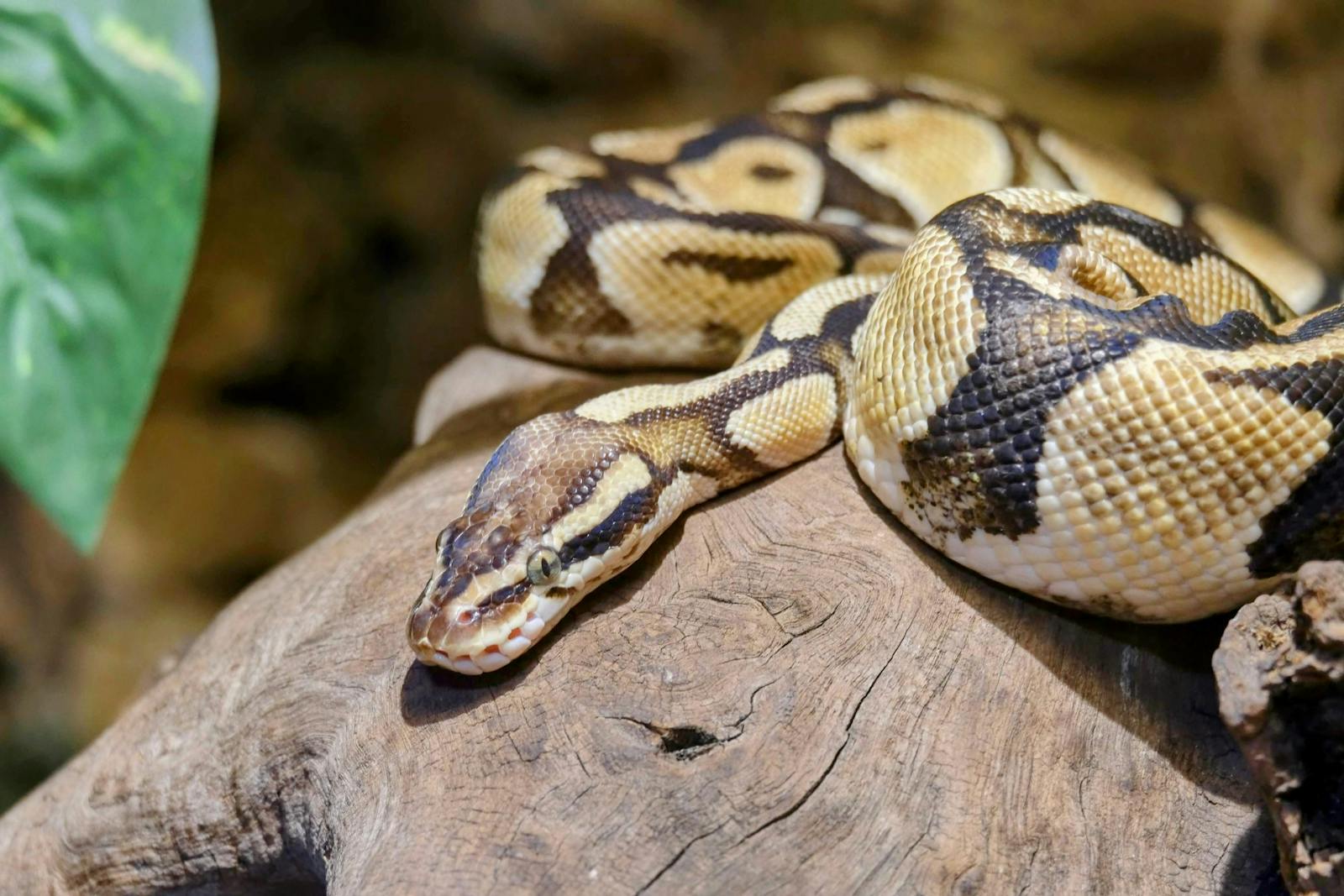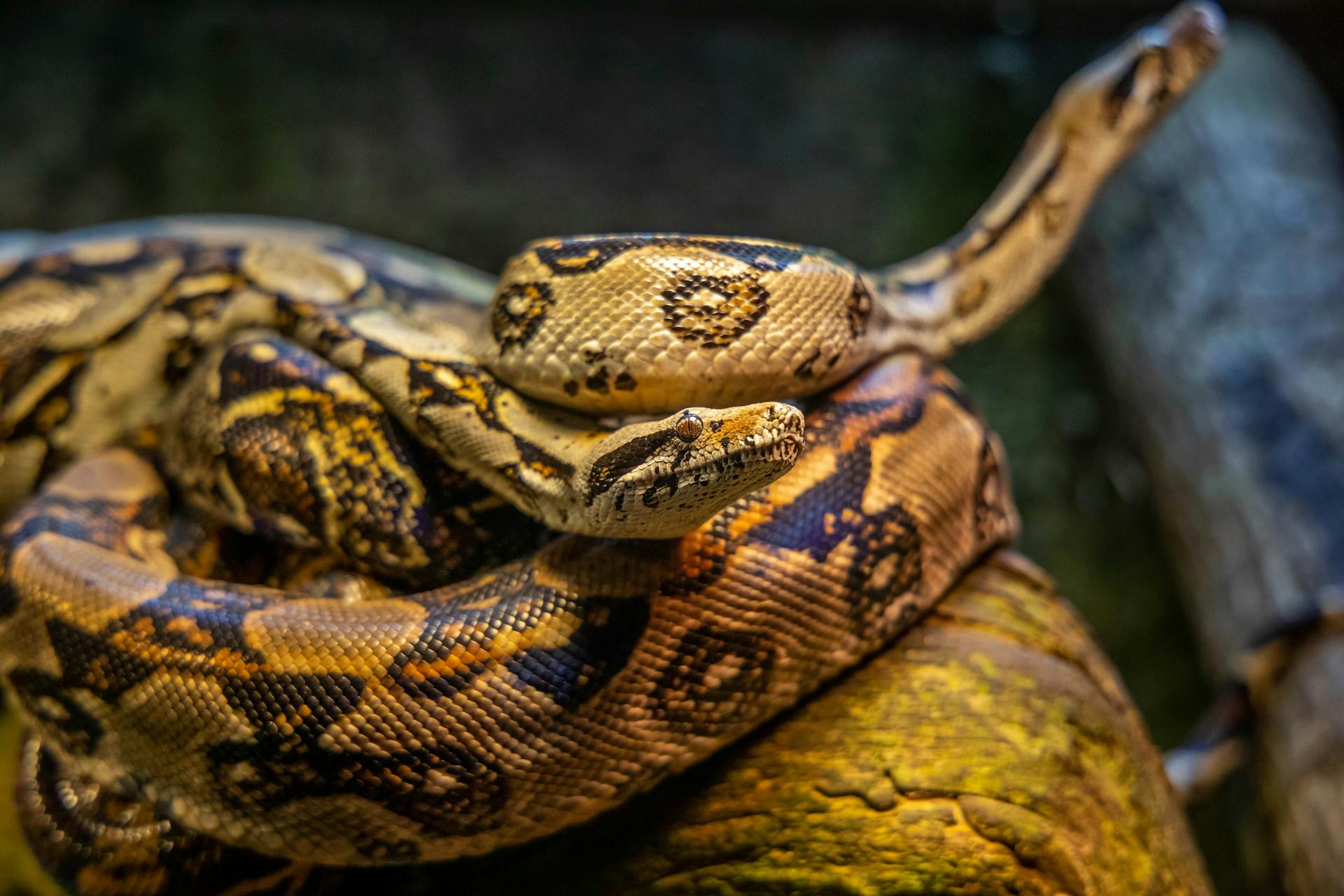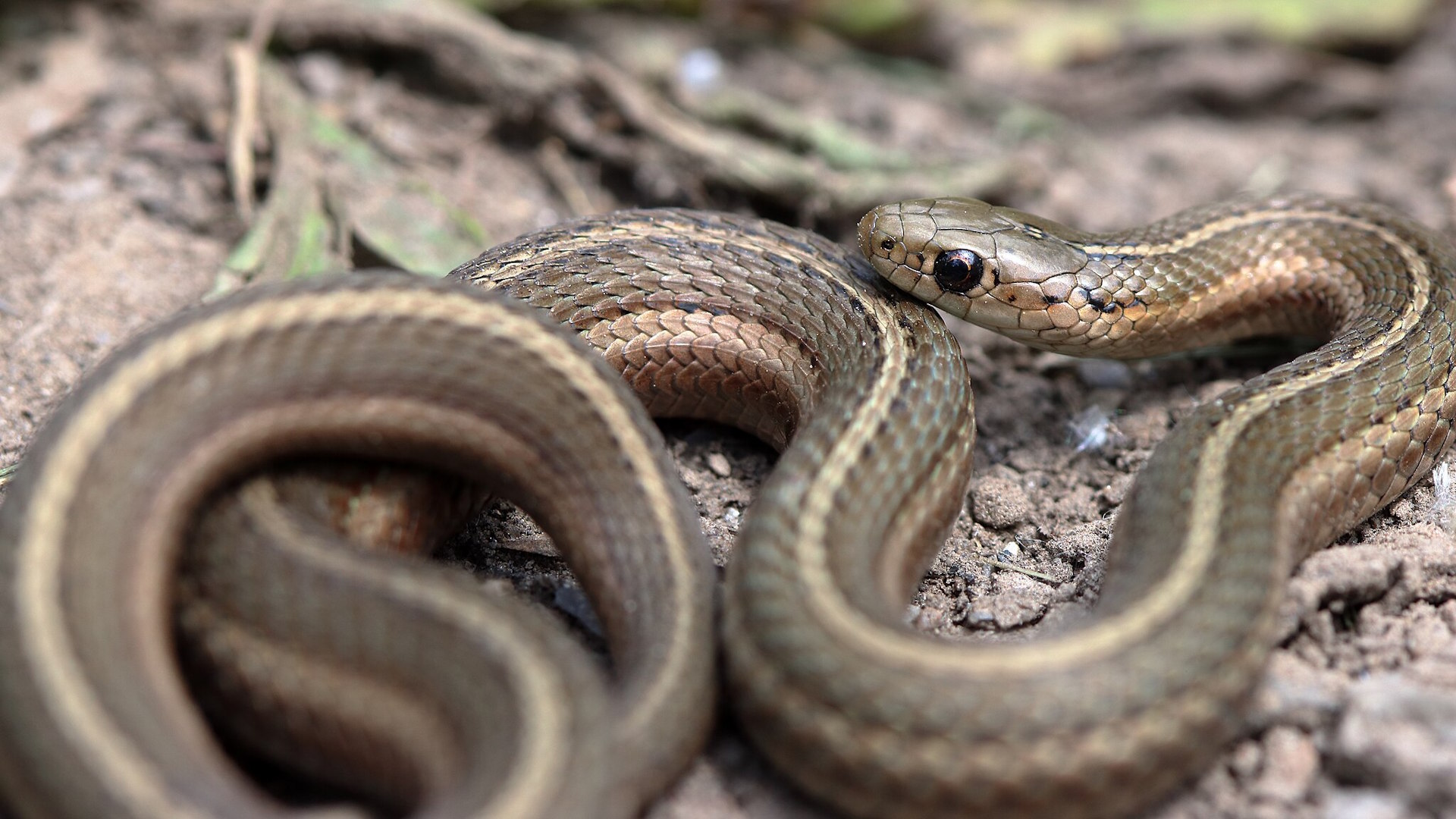The mysterious, slithering world of snakes has long fascinated and frightened humans in equal measure. While dogs wag their tails and cats purr to show affection, snake behavior is much more subtle and often misunderstood.
One question that persistently intrigues reptile enthusiasts is whether these scaled companions can actually recognize their human caretakers.
Unlike the unconditional love we expect from furry pets, the connection with reptiles develops differently, raising fascinating questions about reptilian cognition, emotional capacity, and the unique bond that can form between snakes and their owners.
This exploration into snake recognition abilities challenges our understanding of animal intelligence and invites us to appreciate these remarkable creatures on their own terms.
The Science of Snake Cognition
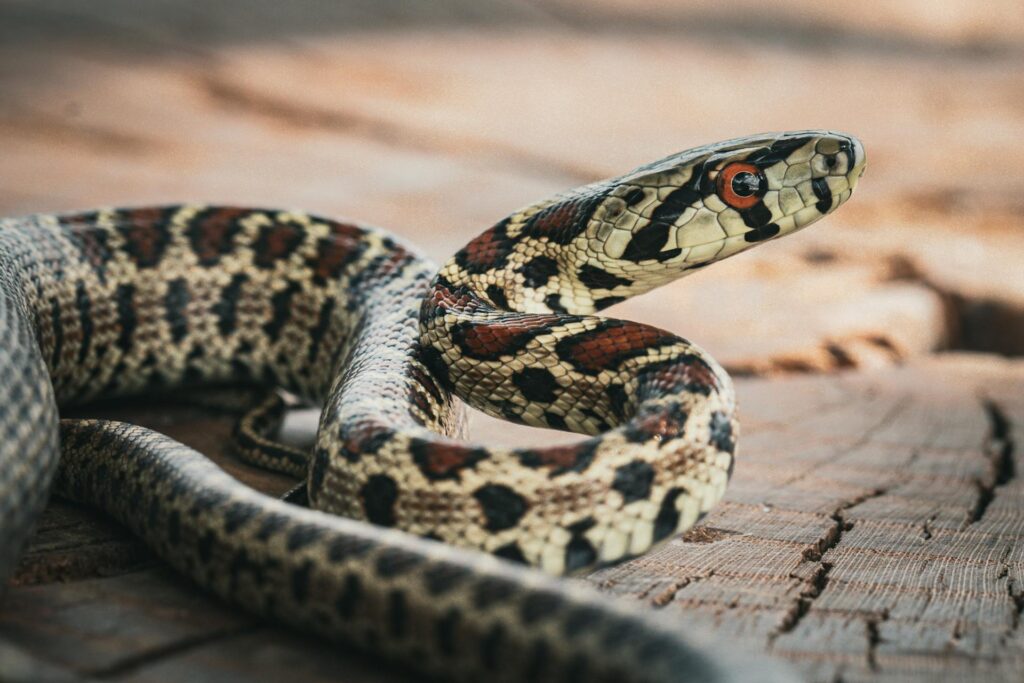
Snakes possess cognitive abilities that are quite different from mammals, causing many to underestimate their intelligence.
Their brains are primarily focused on survival functions rather than social bonding, which has led to the misconception that they are merely “primitive” creatures.
However, research has shown that snakes can learn and remember information relevant to their survival, particularly regarding food sources and potential threats.
Their brain structure, while simpler than mammals, contains areas dedicated to memory formation and sensory processing.
Studies have demonstrated that snakes can remember spatial layouts, recognize patterns, and even form rudimentary associations between stimuli and outcomes—cognitive building blocks that could potentially extend to recognizing individual humans.
How Snakes Perceive Their World
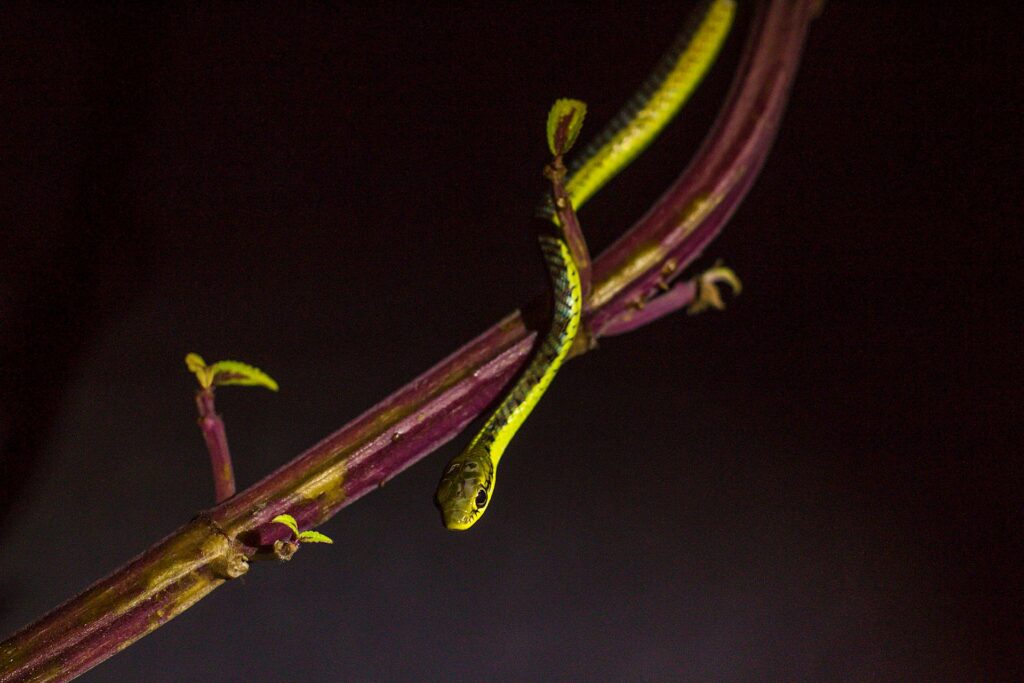
Understanding how snakes might recognize their owners begins with appreciating their unique sensory capabilities. Unlike humans, who primarily rely on vision, snakes experience their environment through a combination of vision, smell, taste, and vibration detection.
Their forked tongues collect particles from the air and transfer them to the Jacobson’s organ in the roof of their mouth, effectively “tasting” their surroundings.
Many species have heat-sensing pits that detect infrared radiation, allowing them to create thermal images of nearby objects and creatures. Vision varies significantly among species, with some having excellent eyesight while others rely more heavily on other senses.
This complex sensory integration means that a snake’s perception of its owner is a multifaceted experience involving scent profiles, thermal signatures, movement patterns, and visual recognition.
Evidence for Owner Recognition

While scientific studies specifically focused on snake-owner recognition are limited, compelling anecdotal evidence from experienced keepers suggests that many snakes do develop the ability to distinguish their owners from strangers.
Behavioral changes often observed include calmer responses during handling, reduced defensive postures, more relaxed body language, and sometimes even approaching the front of their enclosure when their regular caretaker appears.
Some snake owners report that their pets will readily accept handling from them while showing stress or defensive behaviors with unfamiliar people.
Ball pythons, corn snakes, and boa constrictors are frequently cited as species that seem particularly capable of this discrimination.
These observations, while not conclusive scientific proof, align with what we know about reptilian learning capabilities and suggest that snakes can indeed form associations with specific humans.
The Role of Scent Recognition
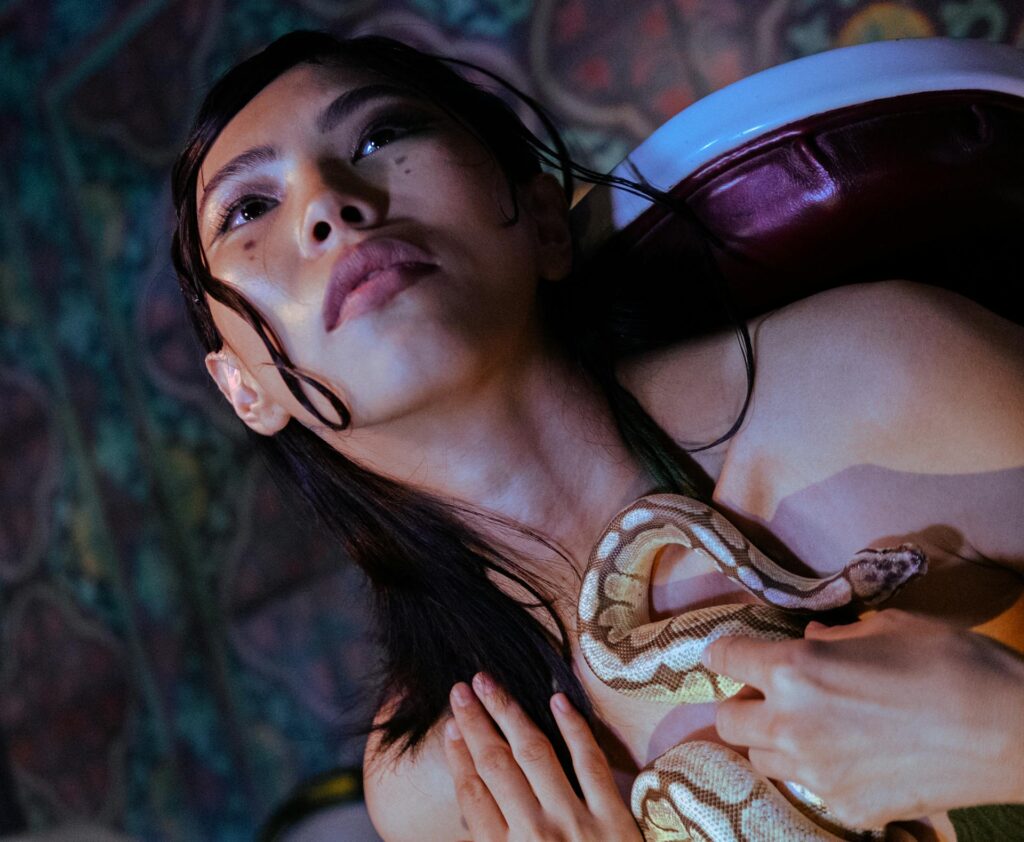
A snake’s incredible olfactory system likely plays the dominant role in their ability to recognize specific humans.
Each person carries a unique scent signature composed of natural body odors, skin oils, pheromones, and even regularly used products like soaps and lotions.
When a snake repeatedly encounters the same human, they can build a scent memory association with that individual, especially when those interactions are positive and stress-free.
Experienced reptile keepers often note that washing hands with scented soaps before handling can momentarily confuse a snake that otherwise recognizes them.
This chemosensory recognition is particularly important for species like ball pythons and boas, which rely heavily on their sense of smell for navigating their environment.
The consistency of an owner’s scent over time helps build familiarity and potentially contributes to the reduction in defensive behaviors observed in long-term captive snakes.
Thermal Recognition Patterns
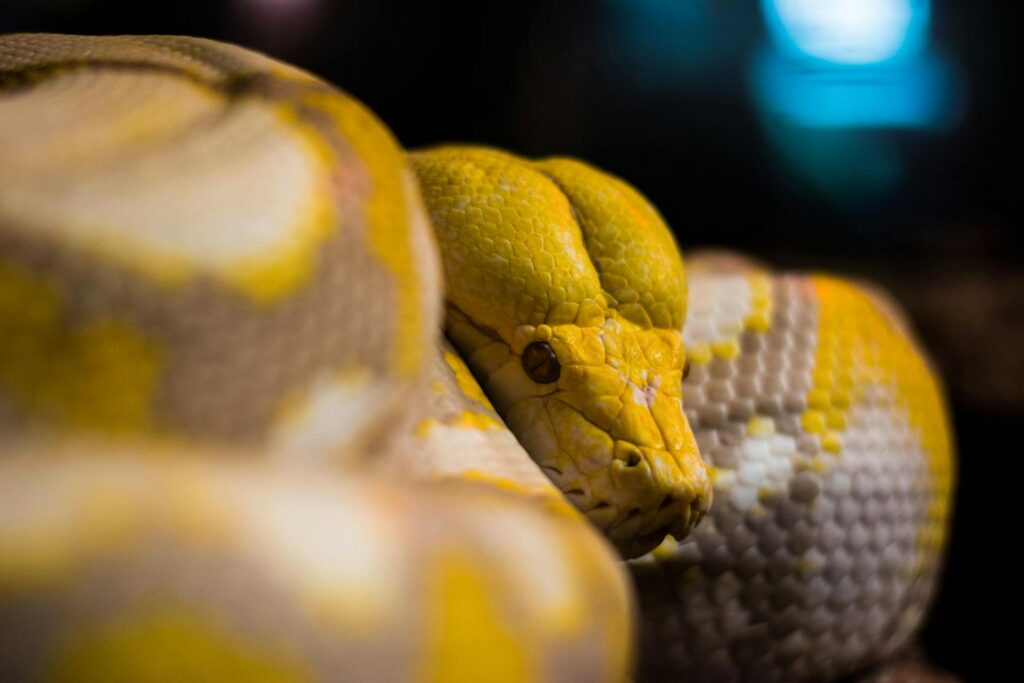
For pit vipers and boas with specialized heat-sensing organs, the thermal signature of their owner may serve as another recognition factor.
Humans emit distinct heat patterns that these snakes can detect with remarkable precision, potentially allowing them to identify familiar individuals by their thermal “fingerprint.”
Regular handlers maintain relatively consistent body temperatures, creating another sensory cue that snakes might use for recognition.
This specialized perception might explain why some owners of heat-sensitive species notice their snakes responding to their presence even before visual contact is made.
Researchers believe these heat-sensing abilities evolved primarily for hunting warm-blooded prey, but in captivity, they may have adapted to serve social recognition functions.
Combined with other sensory inputs, thermal recognition could contribute significantly to a snake’s ability to distinguish between familiar and unfamiliar humans.
Building Trust Through Consistent Handling

Establishing recognition and trust with a snake requires patience, consistency, and respect for the animal’s natural behaviors.
Regular handling sessions that follow a predictable routine help snakes form positive associations with their owners through repeated, stress-free interactions.
Experts recommend keeping initial sessions brief, gradually increasing duration as the snake shows comfort signals like relaxed muscles, calm tongue flicking, and steady, unhurried movements.
Handling techniques matter significantly—supporting a snake’s body properly, avoiding sudden movements, and respecting when they show signs of stress all contribute to building positive associations.
The process often takes months, particularly with newly acquired or previously mishandled specimens.
Consistent handling not only helps with recognition but also reduces defensive responses and stress-related health issues, creating a foundation for a mutually beneficial relationship.
Species Differences in Recognition Abilities

Not all snake species demonstrate the same capacity for owner recognition, with significant variations observed across different taxonomic groups.
Colubrids like corn snakes and kingsnakes often become quite comfortable with regular handling and seem to develop strong recognition responses to their primary caretakers.
Boids such as ball pythons, boa constrictors, and rainbow boas frequently show clear differentiation between their owners and strangers, sometimes even seeking interaction with familiar humans.
In contrast, many elapids (cobras, mambas) and vipers generally show less apparent recognition behaviors, though experienced keepers of these species sometimes report subtle differences in how their snakes respond to them versus unfamiliar handlers.
These variations likely reflect different evolutionary histories, with species that evolved more complex social behaviors or hunting strategies potentially possessing greater neural capacity for individual recognition.
Signs Your Snake Recognizes You
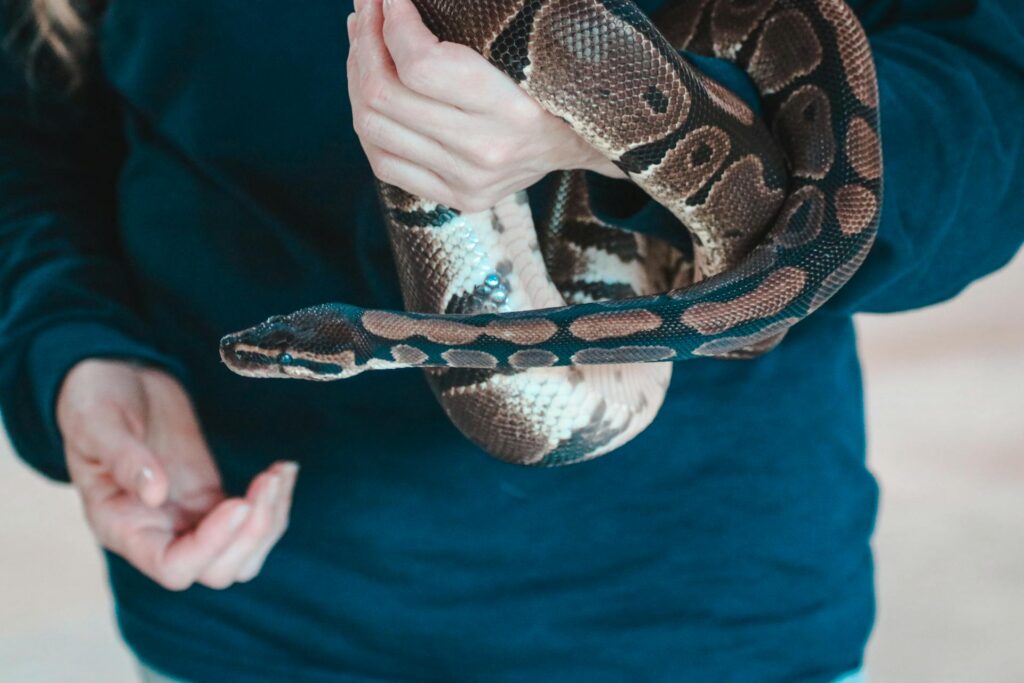
Several behavioral indicators suggest a snake has formed a recognition bond with its owner, though these can be subtle compared to the overt affection displays of mammals.
A recognizing snake often shows visibly reduced defensive behaviors like hissing, striking postures, tail rattling, or ball-forming when approached by its regular handler.
Tongue-flicking patterns tend to be more relaxed and investigative rather than rapid and defensive when a familiar person is present. Some snakes will show increased activity or move toward the front of their enclosure when they see or sense their owner approaching.
Perhaps most telling is when a snake that normally resists handling from strangers will calmly accept being picked up by its primary caretaker without stress signals.
These behavioral differences, while not universal across all individuals or species, provide compelling evidence that snakes can indeed differentiate between familiar and unfamiliar humans.
The Question of Emotional Bonding

While snakes can recognize their owners, the nature of this recognition differs fundamentally from the emotional bonds formed by mammals like dogs or cats.
Snakes lack the neocortex structures associated with complex emotions in mammals, leading most herpetologists to conclude they don’t experience affection, love, or attachment as we understand these feelings.
Their recognition is better understood as a learned association—this human represents safety, proper handling, and perhaps food—rather than emotional bonding.
This doesn’t diminish the significance of the relationship but frames it more accurately within reptilian cognitive capabilities.
Some owners report behaviors that appear affectionate, such as snakes seeking body warmth or showing preference for a particular person, but these likely represent comfort-seeking behaviors rather than emotional attachment.
Understanding this distinction helps set appropriate expectations for the snake-owner relationship.
The Impact of Feeding Associations
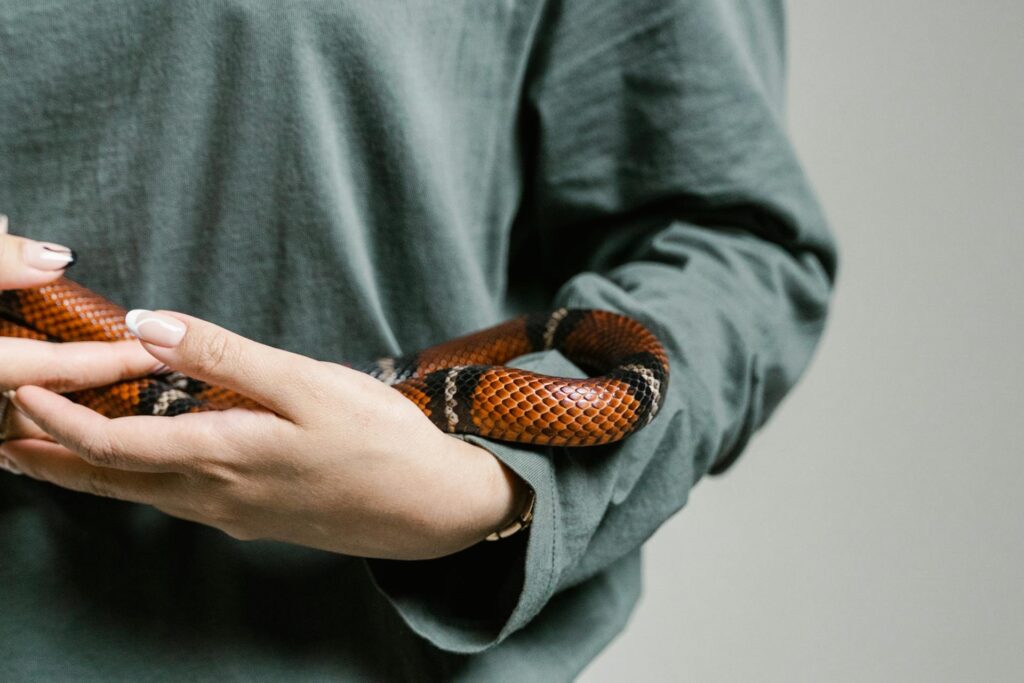
Food associations play a complex role in how snakes perceive their owners, potentially enhancing recognition but sometimes complicating the relationship.
Many snakes learn to associate their owner’s scent, movements, or even the time of day with feeding opportunities, creating strong psychological connections.
These associations can be beneficial, as they build positive experiences with the owner, but they can also lead to feeding responses like excited activity or striking behaviors when the snake mistakenly anticipates food during regular handling.
Experienced keepers often recommend using feeding tools rather than hands and avoiding handling immediately after meals to prevent confusion.
Some owners deliberately use separate handling and feeding enclosures to help their snakes differentiate between social interaction and feeding time.
When properly managed, feeding associations can contribute positively to a snake’s recognition of its owner without triggering inappropriate hunting responses during handling sessions.
Trust Building Through Environmental Enrichment
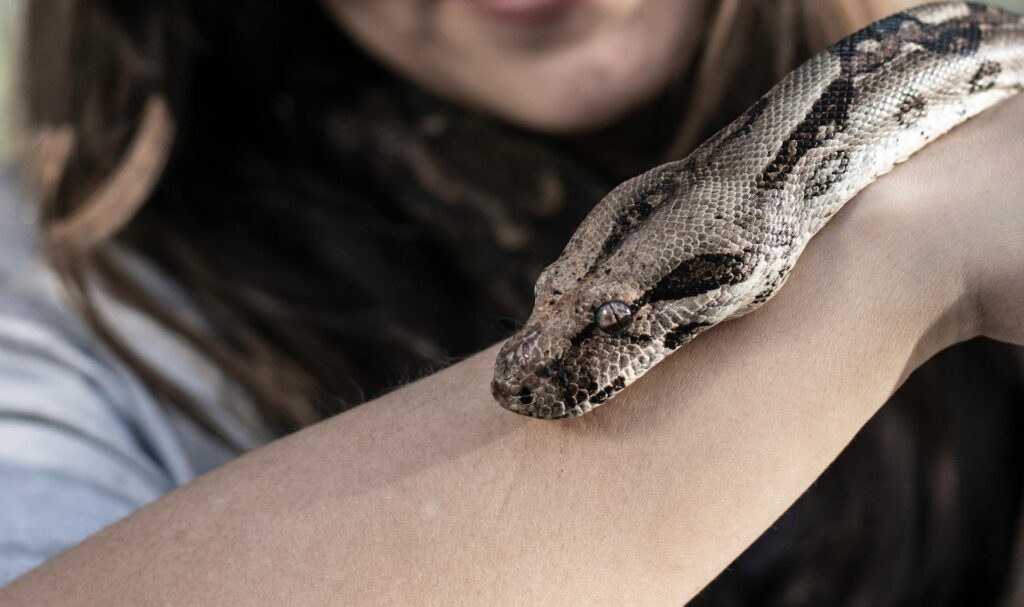
Recognition and trust development extend beyond direct handling to include how owners enrich their snake’s environment.
Providing appropriately complex habitats with secure hiding spots, climbing opportunities (for arboreal species), and thermal gradients demonstrates respect for the snake’s natural behaviors and instincts.
This environmental security forms the foundation upon which recognition and trust can develop, as snakes that feel secure in their habitat are more receptive to positive interactions with their keepers.
Regular, predictable maintenance routines help snakes learn that human presence doesn’t always mean disruption or handling.
Some keepers use target training techniques, where snakes learn to associate a specific object with positive outcomes, which can transfer to more comfortable interactions with the owner.
These enrichment practices respect the snake’s reptilian nature while still fostering the development of recognition responses and reduced defensive behaviors.
Long-Term Relationship Development
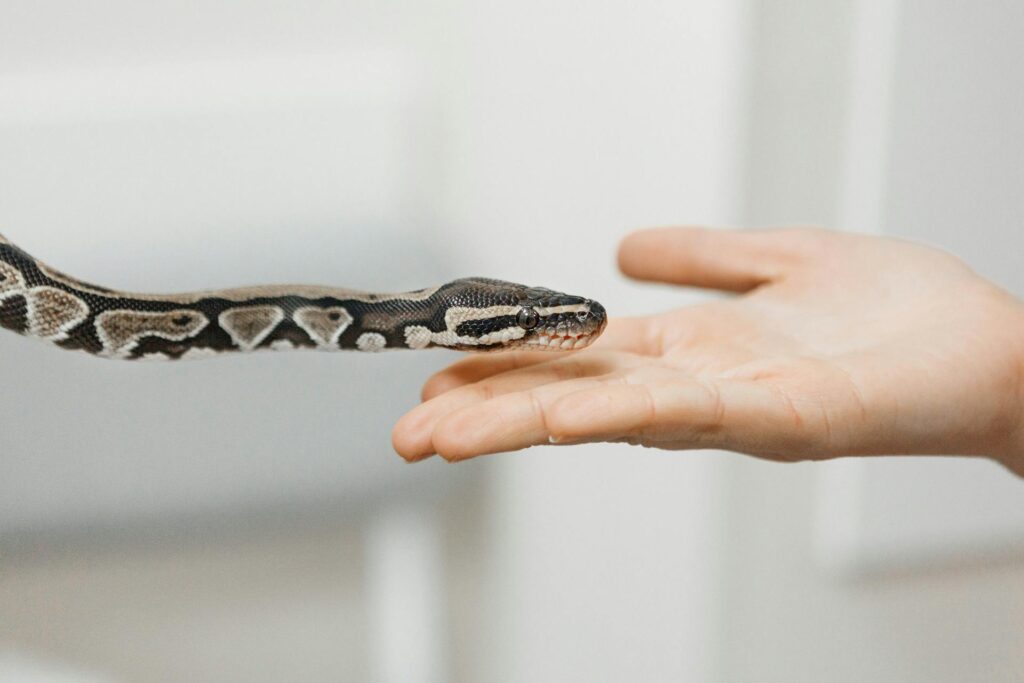
The recognition relationship between snakes and their owners often evolves significantly over years of care. Many keepers report that snakes that were initially defensive or shy gradually develop more relaxed, curious responses to their presence over extended periods.
This long-term development suggests that recognition and trust in snakes may be a cumulative process that deepens with consistent positive interactions over time.
Older specimens sometimes demonstrate more pronounced recognition behaviors than younger snakes, possibly reflecting both neurological development and accumulated learning experiences.
Some long-term snake keepers describe reaching a point where their snake not only recognizes them but also appears to anticipate interaction patterns, showing awareness of handling routines or maintenance schedules.
These observations highlight the importance of patience in developing a recognition relationship with reptilian companions, as the most meaningful connections often emerge gradually over months or years of consistent care.
Practical Steps for Building Recognition
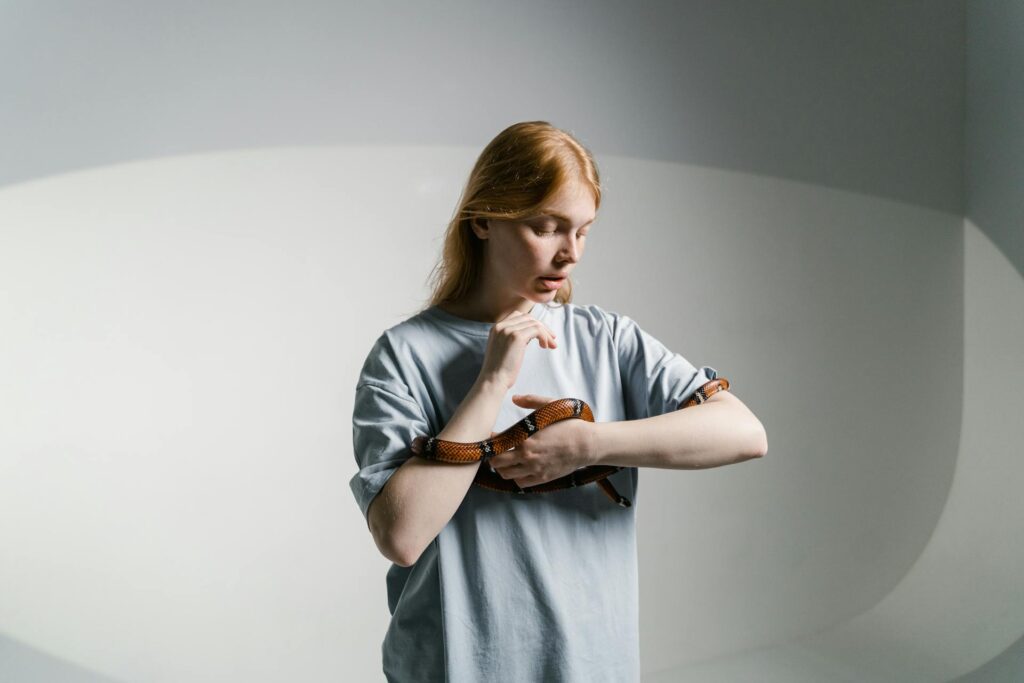
For new snake owners hoping to foster recognition, several practical approaches can accelerate the process while respecting the snake’s natural behaviors.
Beginning with observation-only periods allows the snake to acclimate to its environment before introducing the stress of handling.
When starting handling sessions, keeping them brief (5-10 minutes) and gradually increasing duration as the snake shows comfort helps build positive associations.
Using consistent handling techniques—approaching from the same direction, supporting the snake’s body in similar ways, and maintaining calm, deliberate movements—provides predictability that snakes seem to appreciate.
Some keepers find that talking softly during handling sessions may help snakes associate their voice with the handling experience, potentially adding another recognition cue.
Avoiding handling for several days after feeding and during shedding periods demonstrates respect for the snake’s biological cycles and prevents negative associations from forming during vulnerable times.
The Future of Snake Cognition Research
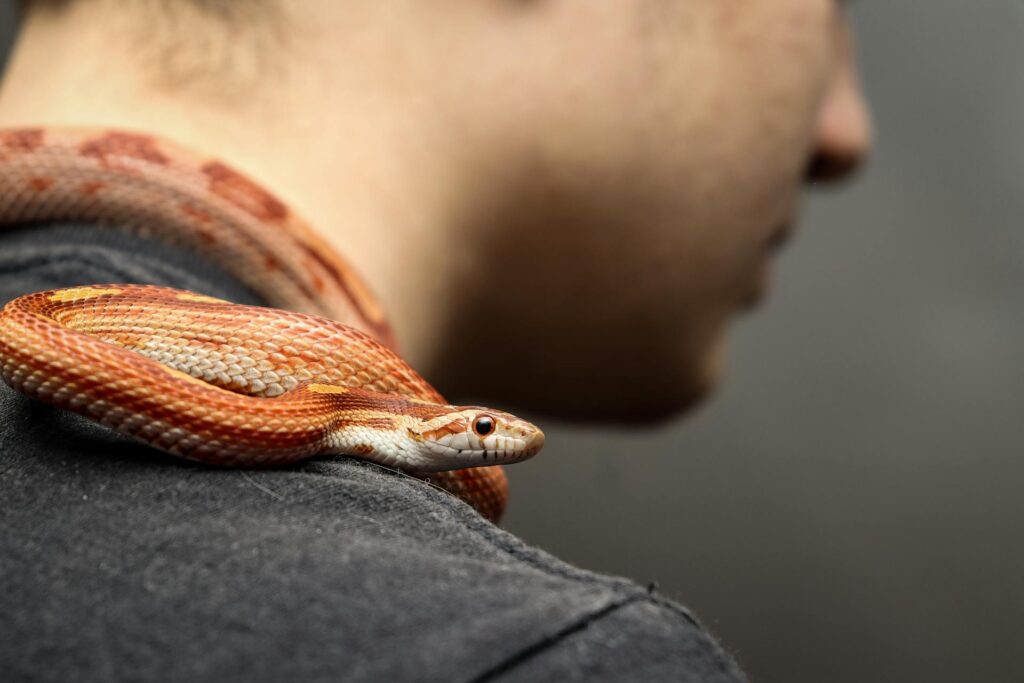
Our understanding of snake recognition abilities remains in its early stages, with exciting research opportunities on the horizon.
Emerging studies using controlled experimental designs are beginning to test reptilian cognitive abilities more rigorously, moving beyond anecdotal evidence toward scientific validation.
Advanced neuroimaging techniques modified for reptilian brains may soon provide insights into the neural mechanisms underlying recognition processes in snakes.
Some researchers are exploring innovative behavioral testing methods specifically designed for reptiles, which could help quantify recognition responses more precisely.
Comparative studies examining differences in recognition capabilities across snake species could reveal evolutionary patterns and identify which species form the strongest keeper-recognition bonds.
As this field develops, it promises to not only enhance our understanding of snake cognition but also improve captive care practices and strengthen the unique relationships between snakes and their human caretakers.
Conclusion: Appreciating Reptilian Recognition
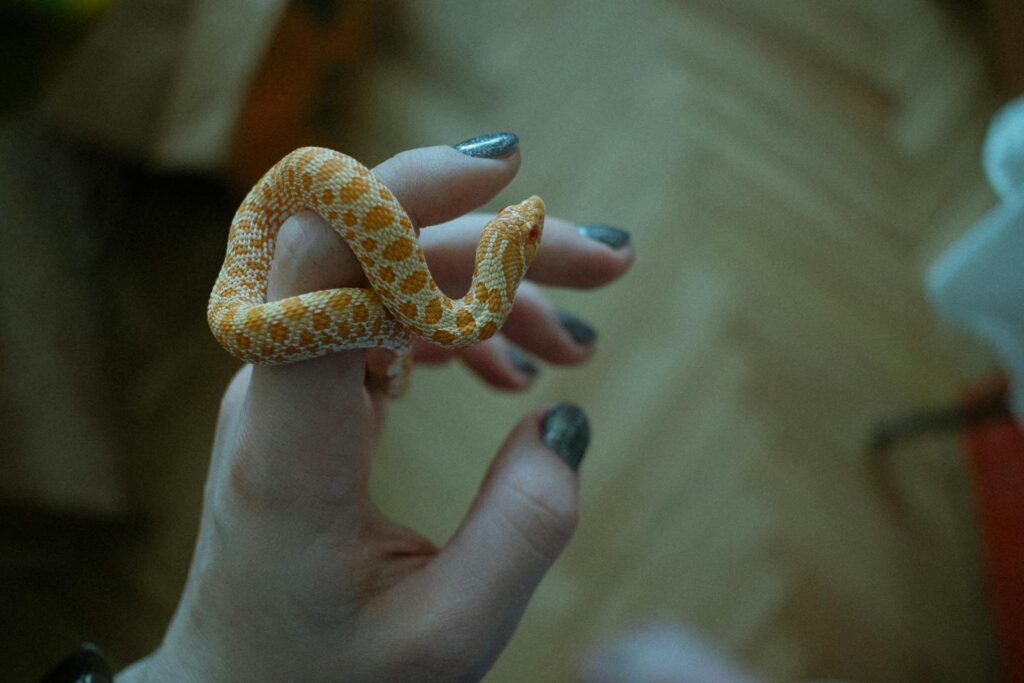
While snakes may not recognize their owners in the emotionally bonded way that mammals do, the evidence strongly suggests they can distinguish familiar handlers from strangers through a complex integration of sensory information.
This recognition capability, though different from what we experience with furry companions, represents a fascinating adaptation of reptilian cognition to captive environments.
The snake-owner relationship reminds us that animals need not mirror human emotional patterns to form meaningful connections with their caretakers.
By respecting snakes on their own terms—appreciating their remarkable sensory abilities, learning capacities, and behavioral adaptations—we can develop relationships that honor their reptilian nature while still enjoying the unique satisfaction of being recognized by these ancient, elegant creatures.
The journey of building trust with a snake offers not just the reward of a calmer, more comfortable reptilian companion, but also a deeper appreciation for the diverse ways that different species experience and navigate their relationships with humans.


